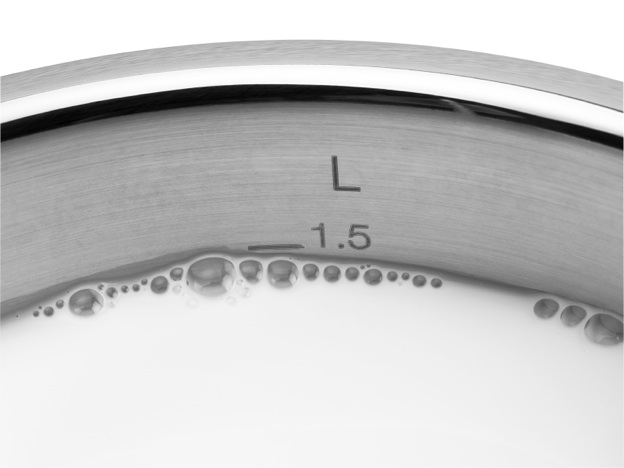SingaporeMotherhood | Baby & Toddler
November 2012
10 Ways To Boost Your Breast Milk Supply

Breastfeeding mothers frequently exchange advice and tips on what works to increase breast milk supply. How can you set yourself up for good milk production, from birth to the end of your breastfeeding career? In The Breastfeeding Mother’s Guide to Making More Milk, authors and lactation consultants Diana West and Lisa Marasco emphasise that low milk supply can be caused by problems within a mother’s body – such as hormonal imbalances. Or she may begin with the ability to produce plenty of milk but have her supply decrease later.
[banner][/banner]
Singapore-based lactation consultant, nurse, midwife and infant massage instructor Betty Lee explains that this could be due to medical conditions such as hypoprolactinaemia (the condition of having too little prolactin, the hormone that promotes milk production, circulating in the blood) or latch difficulties arising from inverted nipples.
Sometimes the infant is the reason. For instance, a newborn who is given a bottle after birth may find it hard to adapt to the breast. In other cases the child could have oral abnormalities, or severe illness, leading to latching or sucking difficulties.
Instead of panicking about your breastmilk levels, try to figure out the cause of your low milk supply first. Once this has been established, you can approach the situation by working out a plan of action to get your breast milk flowing again.
Have an unmedicated birth
An undisturbed birth results in peak hormonal levels in your body after birth. These optimal levels of oxytocin and prolactin in your body encourage milk production in the first hours post-delivery. Your newborn will remain affected by labour medications for up to two weeks, confirm Dr Jack Newman and his co-author Teresa Pitman in The Ultimate Breastfeeding Book of Answers. This affects his or her ability to latch on and remove milk effectively, so it makes good sense to stay away from the labour drugs.
Get close after delivery
A drug-free birth for your baby is the best way to ensure a good nursing relationship. However, not having one does not mean that your breastfeeding journey is doomed to failure. Simple ways to start the flow going after delivery include nursing your newborn within an hour after her birth, and maintaining skin-to-skin contact with your newborn as much as possible. Let her room-in with you. Rooming-in with your baby day and night enables you to respond to your baby’s cues and feed frequently, maintaining your supply.
Give to receive
Milk production works on the supply-demand principle. The basic rule is: the more frequently and effectively breastmilk is removed from your breasts, the more milk you will produce. So feed when your baby wants to feed, on demand, not on the clock. The simple truth is that frequent, unlimited feeding ensures effective milk removal.
Keep the bottle away
Artificial nipples require a baby to use different tongue and mouth movements from those he uses when breastfeeding. When bottles and pacifiers are given to a newborn who is learning to breastfeed, he is unable to ‘milk’ the breasts effectively when breastfeeding.
Put the pump aside
Mothers are often told to drain their breasts by pumping after each breastfeeding session. However, lactation consultant Ms Lee cautions: “I do not encourage pumping in the early weeks as a pump can only remove milk where the (breast) shield covers. Mothers will have to spend more time expressing or increase the frequency of pumping sessions and this can be tiring and unhelpful for new mothers!” Pumping after feeds also interferes with the balance between a mother’s milk supply and her baby’s needs, encouraging engorgement or plugged ducts.
Go hands-on
Encourage milk letdown and flow by applying warmth to your breasts, shoulders and upper back before nursing. Breast massage and compressions also help.
Cosy up to baby
Research linking milk production with nurturing parenting behaviours shows a positive inter-relation between the two. As you interact with your newborn, the oxytocin and prolactin hormones in your body surge in response. Both these hormones are necessary for milk letdown and production, leading to the theory that mother-baby interaction can promote milk production. Breastfeeding mothers also have higher levels of oxytocin and prolactin in their blood, promoting care-giving behaviour and bonding, creating a positive cycle that supports continued breastfeeding.
Be together
Other ways to enhance the mother-baby bond – and hence increase milk production include co-sleeping with your newborn, giving your baby infant massage, and ‘wearing’ your baby in a carrier or a baby sling. Co-sleeping enables mothers to breastfeed frequently and responsively at night, while infant massage helps boost a new mother’s confidence in communicating with her baby. Pearline Foo, mother of two and co-owner of babywearing boutique Baby Slings & Carriers affirms, “Wearing baby in a sling, wrap or soft-structured carrier promotes skin-to-skin contact, which releases the ‘love’ hormone, oxytocin. That’s definitely a great plus for a new mother looking to increase her milk supply!”
Eat well
Eating a balanced variety of whole foods regularly will help your physical and emotional well-being as you care for your child; it also sets you up for good milk production.
Ms Lee shares that Brewer’s yeast and beer are used in Northern Europe, while fish and papaya soup are used in Southern China and Singapore. East Indian Ayurvedic tradition favours rice pudding with milk, sugar, pumpkin, sunflower seeds and sesame seeds while Northern American mums eat oatmeal to increase supply.
In her book Mother Food for Breastfeeding Mothers, author Hilary Jacobson explores how certain foods and herbs can enhance lactation and provide a host of benefits for the new mother and her baby. These include:
- Carrot, beet and yam: contain beta-carotene, believed to be needed in extra amounts while breastfeeding. Carrots also contain phytoestrogens that help increase breast milk production.
- Dark green leafy vegetables: bok choy, spinach and kang kong contain vitamins, minerals, enzymes and phytoestrogen, all needed for lactation.
- Grains: oats and barley are well-known for enhancing milk production.
- Legumes: chickpeas and lentils support lactation, and are a great source of protein.
- Nuts: almonds and cashews promote milk supply. Choose raw nuts instead of salted or roasted ones!
- Garlic: increases milk production and is a powerful antioxidant. Take only one to two cloves daily, adding them to vegetable dishes or stir-fries. If you are not used to consuming garlic, introduce it slowly and observe baby’s reaction.
- Ginger: helps letdown and flow, facilitating milk removal. Breastfeeding mothers can consume ginger in meals, in teas or in ginger ale.
Think about herbs
Herbs are popular among nursing mothers, who use them to boost their breast milk supply. If you are considering herbs as a remedy for low milk supply, do consult a trained and certified practitioner – a herbalist, a naturopath, or a Traditional Chinese Medicine doctor. Herbs that have been known to help increase breast milk supply include:
- Blessed Thistle: used for many generations to increase milk supply, it works well when used in combination with fenugreek. It also promotes hormone balance.
- Fenugreek: also a culinary ingredient, this has long been used to increase breast milk supply. Fenugreek is believed to stimulate hormonal changes.
- Fennel: increases milk production and aids digestion. It contains phytoestrogens and is thought to help letdown.
- Goat’s Rue: comes from the same family as fenugreek and seems especially helpful for mothers who have PCOS (Polycystic ovary syndrome, a condition in which a woman has an imbalance of a female sex hormones).
- Dill Seeds (Anethum Graveolens): increases milk supply while helping digestion. It is popular in nursing teas.
- Domperidone and Metoclopramide: these pharmaceutical options help increase milk supply. As with any drug, they have benefits as well as side effects.
Lactation consultant Betty Lee encourages mothers to see a breastfeeding counsellor or lactation consultant before turning to herbal remedies or drugs. The visit will help you ensure that your baby is removing milk effectively at each nursing session. It will also determine if latch or positioning is causing your difficulties.
Addressing low milk supply involves taking into account the cause, the context of the problem as well as the individual mother-baby pair’s challenges. Are there medical issues that may play a role? Are there health concerns to consider? Can supply be increased by making adjustments to how breastfeeding is managed? Bear in mind that if you do not have a true low supply, taking substances to increase your supply can set you up for an oversupply and accompanying problems.
Seeking knowledgeable breastfeeding support and staying flexible will serve you well as you work through this bump in your breastfeeding journey. All the best!
All content from this article, including images, cannot be reproduced without credits or written permission from SingaporeMotherhood.
Follow us on Facebook, Instagram, and Telegram for the latest article and promotion updates.






